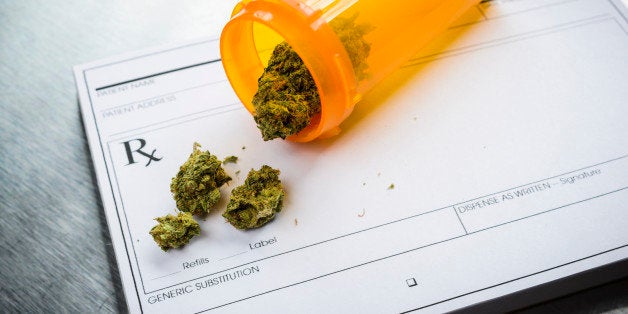
Let's face it, there have been lots of mistakes in the medical marijuana industry over the past 20 years. And I mean lots of mistakes, beginning way back in 1996 when California passed Proposition 215.
That was the first attempt of a state to legalize medical marijuana, and the result has been pretty messy. Sure, marijuana became available. But there hasn't been much oversight or control. And for a long time, California has been the wild west of the medical marijuana movement.
You could point to lots of problems that Proposition 215 created. And critics of the medical marijuana movement do. Frequently and gleefully. But the problem that has been most troublesome, in my opinion, is the ease with which anyone with $30 can get a letter of recommendation that lets them purchase medical marijuana in California.
When I was researching a book on this topic (Stoned: A Doctor's Case for Medical Marijuana), I heard that there were no meaningful limits on who could get such a letter. The stories of lawlessness were hard to believe, so I decided to see for myself. And I can tell you that at some clinics at least, truly anyone can get a letter of recommendation.
Me, for instance. As an out-of-state resident, I shouldn't have been able to get a letter. But 15 minutes after I put down $35 on the counter of a skanky storefront clinic in Santa Monica, I walked out with a letter entitling me to buy whatever marijuana products I thought might make my life better.
Let's be clear about one thing, though: I never used that letter of recommendation to buy anything. (And to all of you DEA agents out there reading this, thanks for your service! Keep up the great work!)
So that's just one example of the many ways in which California's 1996 law doesn't work. Certainly more regulation and more oversight are needed. No doubt about that.
But honestly, we shouldn't expect laws like Proposition 215, in a brand-new field, to work well right out of the gate. That's especially true for something like medical marijuana that people still don't understand. A perfect law on the first try isn't going to happen. Ever.
And the good news is California is fixing a lot of those mistakes that were put into place almost 20 years ago. For instance, the new law includes limits on the number of licenses that are available. California will also start mandating testing marijuana products for cannabinoid content and contaminants, which is another significant improvement.
In a sense, California's original 1996 law was a first draft for that state, and a rough template for other states to follow. As a first draft, it wasn't bad. Now California is improving its first draft, as other states are following suit.
Even better, the states that are coming on line now are incorporating some of these lessons from the past. In my opinion, Maryland has some of the best legislation out there. Maryland's laws include testing, limited numbers of licenses, and very, very careful scrutiny of applicants for business licenses. In fact, security and background checks for those applications look more like what you'd require for defense contractors than what you need for purveyors of pot.
Despite what is arguably significant progress in legislation, we still haven't come up with the perfect law. Even in California, the state that has had the most time to think though these issues, there is still room for improvement.
For instance, in its revisions, California missed an opportunity to collect data about potential benefits of medical marijuana, as well as its long-term risks. In that state alone, there may be more than 500,000 people using medical marijuana. It's a shame to think that we're not letting patients report their experiences, both good and bad.
I also wish the revised California law had included a requirement for education. It's fine to restrict licenses, and it's great to crack down on how recommendations are provided and how medical marijuana is dispensed. But I'd like to be confident that the dispensary staff who are selling medical marijuana know what they're doing.
At a minimum, they should know whether and how medical marijuana works for common conditions like PTSD, pain, insomnia, and nausea. They should also be able to counsel patients about short-and long-term side effects and interactions with other prescription drugs. Patients deserve to know that dispensary staff have been through a bare minimum of training. The same goes for physicians who are handing out those recommendations.
So there are still flaws in California and they're probably will be flaws in the laws of other states like Maryland that we just haven't figured out yet. But that's OK, as long as we're willing to learn from our mistakes.
California has learned valuable lessons from its mistakes. And other states like Maryland have obviously paid close attention to those lessons. If other states do, too, eventually we'll reach a point at which we have safe, sensible medical marijuana legislation in most of the country. And then, maybe--just maybe--Federal laws will catch up.
